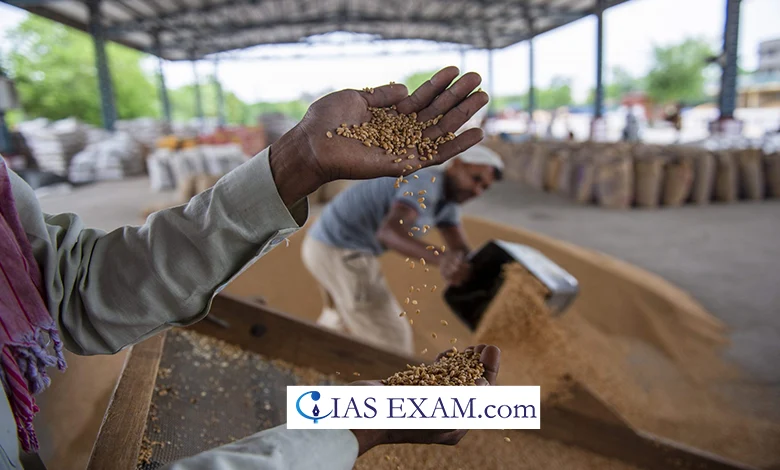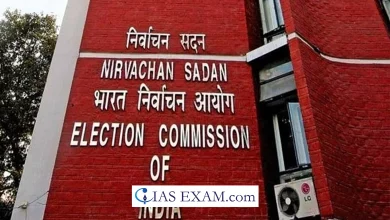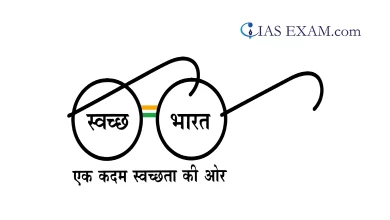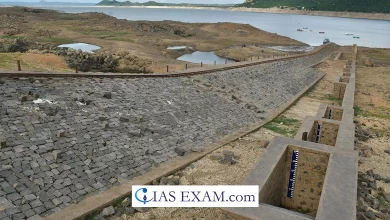Importance of Fixing India Food System
GS Paper 3 - Agriculture and related issues

Context
India’s economy is among the fastest growing in the world. Nearly half of the country’s population engages mainly in agriculture. Over the last few decades, the industrial and services sectors have increased their contributions to economic development, while agriculture has dropped. India’s severe agricultural crisis has been impacting farmers across the country for almost a decade.
Despite increasing temperatures, most pollsters believe that the incumbent government would remain in power. It also has already instructed several departments to develop plans to be announced within the first 100 days of their third term. The ministries are contacting various experts to help them frame the right policy framework that is in sync with the vision of Viksit Bharat@2047.
Challenges to Agri-food Systems in India
- Exploitation of Water Resources – Farmers started cultivating water-intensive crops in low-rainfall areas, implementing water-based methods and off-season agriculture, as the marginal cost of utilizing water approached zero. Despite the fact that half of the agricultural land is rainfed and without access to irrigation, the sector consumes about 90% of the country’s total water supply.
- Loss of Crop Diversity – Actual crop pattern and acreage allocated to various crops are at significant variance with what is suitable from the agro-climatic point of view. The deviation is mainly caused by policy support and disparities in advancement in technology for various crops.
- Low Efficiency – India’s agricultural growth, while resilient in most products and states, has still fallen short of its potential. Our production is lower than that of other major agricultural countries. The sector is slowly modernizing. The much needed changes in technology, method of production and post-harvest value addition are not visible on a large scale.
- Regional Disparities – Imbalances between demand and domestic production have grown throughout time. India has been collecting a substantial surplus of rice, wheat, and sugar, at a significant expense to the public exchequer.
- Technology Generation – Agricultural challenges are growing more complicated, while research is becoming more capital expensive. Climate change, agriculture’s contribution to greenhouse gas emissions, and sustainability concerns all contribute to the issues that the R&D sector must confront.
- Nutrition and Food Safety – The country’s nutrition indicators and child health indicators are very low. According to the Global Hunger Index, India scores low year after year, despite becoming the largest rice exporter, with around 15% of its rice production sold in the international market. India is a paradoxical example of ‘hunger in the midst of abundance’.
- Low Farmer’s Income – The disproportionate share of agriculture in national income and employment suggests a gap in per worker income between the agricultural and non-agriculture sectors. At the macro level, non-agriculture workers earn 3.75 times the typical agricultural worker’s pay, which includes agricultural laborers and cultivators.
Measures to Improve Agricultural Productivity
There are some suggestions for the agri-food space. They are based on interactions with experts during the four-day forum organized by the Asian Development Bank on food security in the wake of climate change.
- Increasing Total Factor Productivity – Agriculture has to produce not only more food, fibre and even fuel (biofuels), but it has to do so with fewer resources. India’s population is likely to go to about 1.6 billion by 2047. So, there are more mouths to feed. With gradually rising incomes, people will demand more and better food.
- Climate Resilient Agriculture – The production system is under threat from extreme weather events caused by global warming. The actual solution is to invest in climate-resilient (smart) agriculture. This would imply additional expenditures in heat and flood-resistant crops, as well as more investment in water resources, not just to supplement supplies but also to ensure that water is used more wisely.
- Building Efficient value-Chains – By 2047, much of the food will have to be moved from rural to urban areas in lieu of the growing population. This would require a massive logistics revolution, from transporting to stocking to processing and organized retailing and thus would open doors for large-scale investments by the Private Sector. The new government will have to facilitate this transformation by changing laws that are suitable for Bharat@2047.
- Promoting FPOs & Cooperatives – While every player in the food system transition, from seed to agricultural machinery to processing and retailing, are expanding, farming continues to splinter into smaller and smaller holdings. The problem is to bring these smallholders together through Farmer Producer Organizations (FPOs) or cooperatives (as was done in the milk industry, like AMUL) to achieve the size required for processors, organized retailers, and exporters.
- Public-Private Partnership – Public-private partnerships are the way forward. The private sector can create efficient value chains while also producing seeds that are more climate resilient and nutritious. The government must provide a suitable policy framework.
Way Forward
A major and sustained rise in farmer income, as well as the transformation of agriculture, necessitate a paradigm shift in the whole approach to the agriculture sector. Changes in obsolete rules, as well as sector liberalization, are required to provide an enabling environment for modern, dynamic agriculture. Advancements in science-led technology, a greater role for the private sector in both pre and postharvest phases, a liberalized output market, an active land lease market, and an emphasis on efficiency will equip agriculture to face the challenges of the twenty-first century and contribute to the goal of a new India.
SOURCE: The Indian Express





.png)



